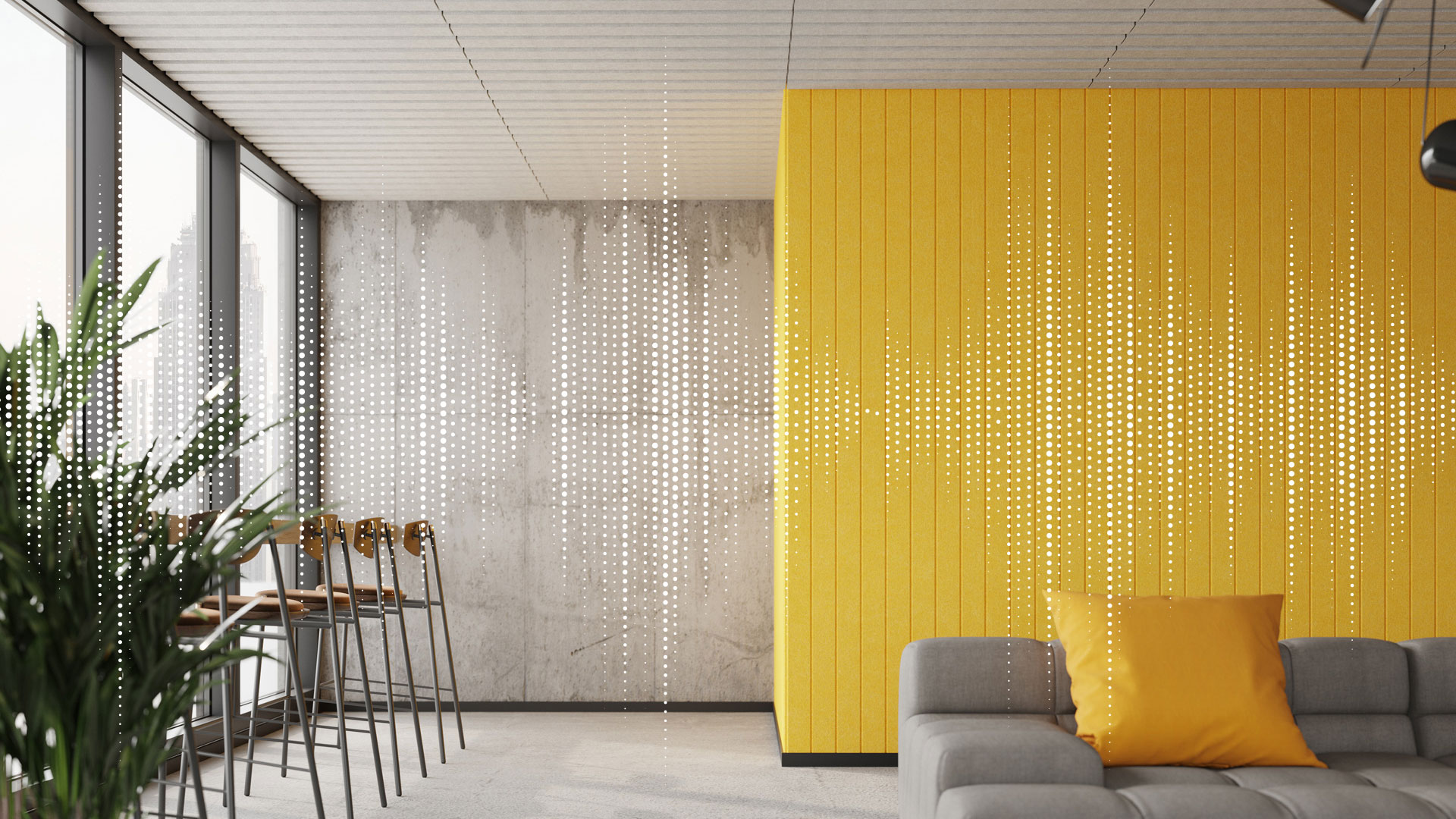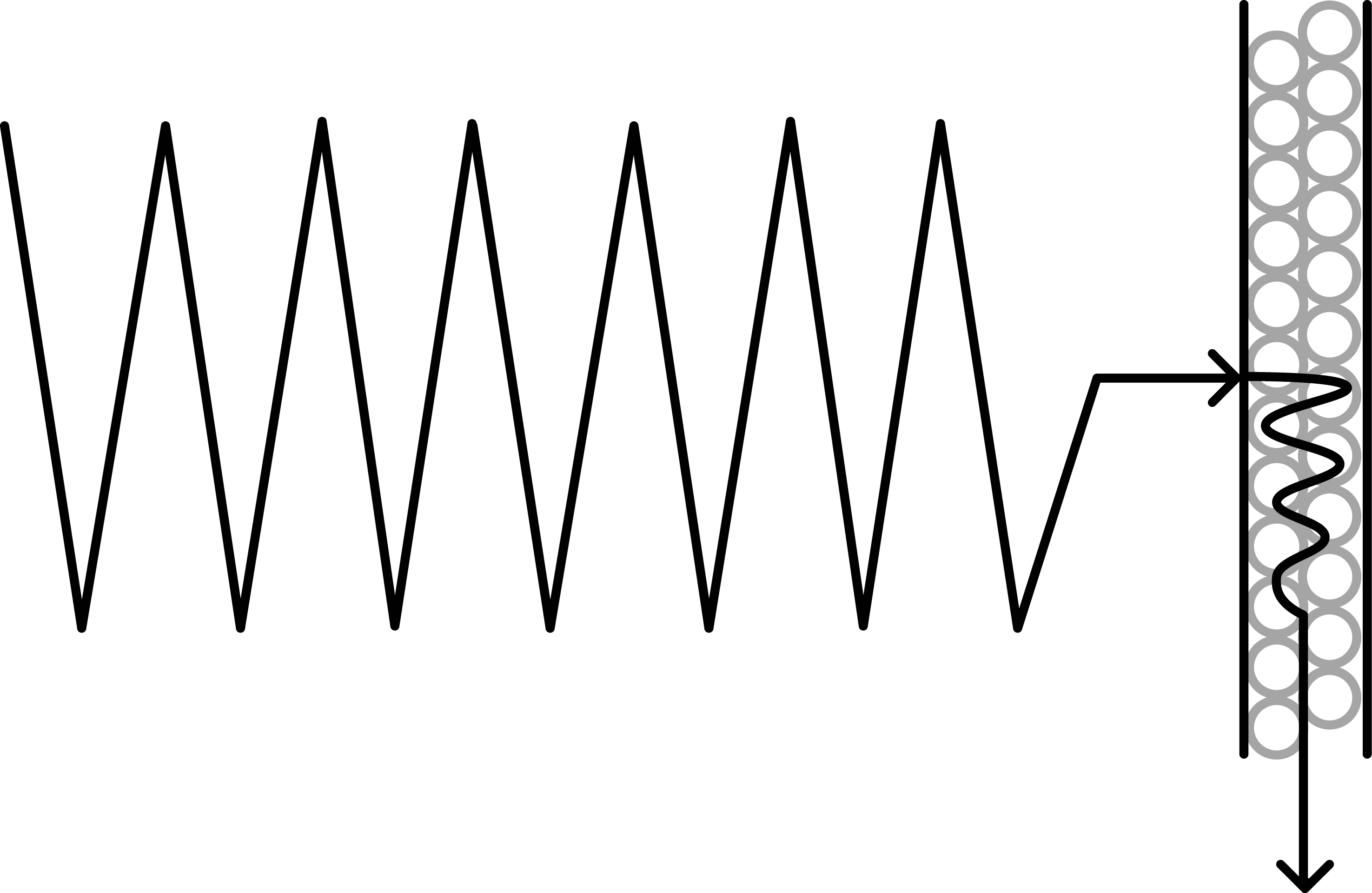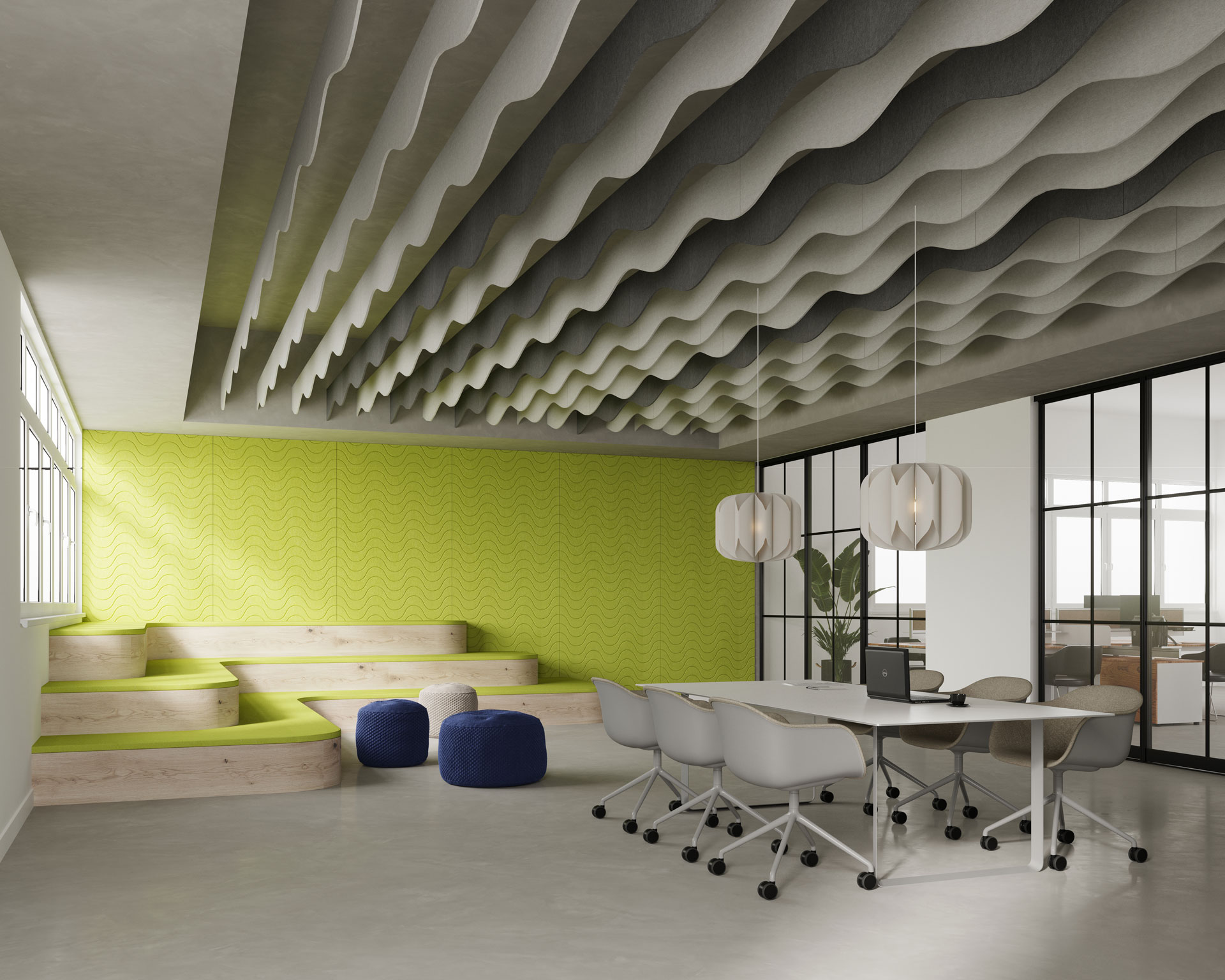The basics of soundscaping
Space sculpts sound. Different spaces – their shape, construction, materials, objects, inhabitants and use – sculpt sound differently, and often dynamically.
The sounds we perceive within a space are essential to our experience, and unwanted sound has a steep cost in perception, well-being, and productivity, especially where we work, learn, heal and play.
It follows, then, that the tools for soundscaping interiors are an essential part of the A&D toolbox, and soundscaping is an essential skill.
Learn to “see” sound
The sounds we can hear begin as vibrations that travel in waves the human eye can’t see. But as designers, we can learn to visualize and predict how sound is likely to behave in our designed environments, even before bringing an acoustician on board.

It’s useful to use a couple of visual metaphors to think about how sound waves travel. Sound waves can move through gas, liquids, and solids. They can travel and leak through cracks and anywhere they haven’t been fully contained, from outside to inside, from room to room, through the plenum, between walls, through gaps in electric receptacles and masonry, cracks in windows and under doors.
And sound waves reverberate, bouncing like rubber balls off of hard and smooth surfaces, walls, ceilings, floors, objects, creating echoes that can confuse the ear and agitate the mind.

Our ears and brains are designed to convert sound waves into sound frequencies and sound pressure. The sound frequency, measured in hertz, determines the pitches our ears and brains are designed to hear, and the sound pressure, measured in decibels, is a measure of intensity. We sometimes think of decibels in terms of the loudness of sound, but it’s really a measure of pressure in time. It is exposure to very high decibels – even short exposure – that can damage our hearing. But any unwanted sound can damage the experience of a space.
Soundscaping
“Soundscaping” is coined from acousticians who study soundscapes in nature. It describes the act of creating an experience of sound appropriate to the context of a space – its purpose, its inhabitants, its design and intended brand experience. In soundscaping, desired sounds are preserved or enhanced, unwanted sounds are eliminated, suppressed, or masked.
Unwanted sounds, of course, are different for everyone and depend entirely on context. For instance, the kind of confused noise we expect at a cocktail party would be hard to take when curled up with a good novel at home. But a similar kind of hubbub is expected in a coffee shop, where we manage to focus on and enjoy that same novel.
And humans are communal creatures. We want and are comforted by some sound, always. Soundless environments are quite distressing – all humans use sound consciously and unconsciously to perceive threats and understand where we are in space and time.
So the goal of soundscaping is to preserve the right sounds, at the right levels, in the right space at the right time.
How do we get there? By eliminating, suppressing, masking, and diffusing sound.
Effective soundscaping uses all four of these tools to design and deliver the sound experience you want, where you want it.
Eliminating sound is what we do when we are sound-proofing, creating sound-proof barriers and enclosures that completely stop sound from moving from outside to inside. We do this by carefully sealing off spaces. Specialized building materials and methods and HVAC solutions are needed at the planning stage of a build-out to completely eliminate unwanted sounds. Elimination is the most permanent and costly of the strategies a designer can use, and so the appropriate use of these techniques include places like theatres, large meeting halls, and conference rooms where cognition is essential and sensitive conversations must be contained, or to eliminate outside noises in urban settings, where quiet spaces are needed for places like hotels, libraries, schools, healthcare facilities, and residences.
Suppressing unwanted sound is a matter of making quiet exactly where it’s most needed. We do this most efficiently by providing surface types that absorb sound waves in those spaces. The amount of sound that can be managed through absorption is determined by the type, thickness, and surface area of the material. Porous materials are very efficient at stopping sound from bouncing back into a space or leaking between spaces. These materials can be installed on walls, ceilings, or floors, or used as screens, furniture, and features inside a space.

Masking sound is accomplished by adding more sound to a space, tricking the brain so it can’t process the ambient sounds into distracting noises, and can remain focused on closer conversations or tasks. Sound masking can be accomplished through “white noise” or music broadcasting, or sound-masking features like waterfalls or fountains.
Diffusing sound is a different kind of strategy altogether. Acoustic diffusers do not eliminate sound, but reflect sound waves in many directions, eliminating echoes, and improving overall sound experience. Use sound diffusion in rooms where outside and unwanted sound have been managed, but hearing comprehension is essential.
Using these four tools allows designers to manage sound from outside and inside a space. Which tools to use within the environment depends entirely on the experience the designer wishes to create, and whether the goal is to eliminate or improve the sound. An open space may have multiple goals, requiring focused strategies for different areas..
Which products, where?
Now that you know how sound moves, how it bounces off hard surfaces and travels through open spaces, you can visualize sound waves in the occupied space. How many occupants, what kinds of use? Where does the sound come from — from people? Electronics? Sound systems? From outside or in? And where does it go? Will it be captured by that felt wall or bounce from marble floor to glazing to hardwood wall and back again in a repetitive, reverberating dance?
Once you can see the sound paths in your head, your goal is to obstruct that energy with sound-absorbing material. To stop reverberation faster, sound absorption likes company. Providing porous, absorbing material on perpendicular surfaces is more effective, where your design allows it. Noisier spaces need more density. Pay special attention to corners and hallways, which can create problematic echoes. Their walls, ceilings, and floors are prime locations for sound-absorbing coverings, screens, features, or furniture.

Consult an acoustician
Working with a qualified acoustician can help you set acoustic goals, target sound levels for each space in a building, and measure the efficacy of your acoustic design, ensuring you don’t over- or under-invest in acoustic products. They understand when to apply which tool to achieve each sound goal, and are familiar with the companies who provide acoustic products and services. To find a qualified acoustician near you, consult the directory at https://ncac.com/.
Are you ready to soundscape your next project? Let us help you.